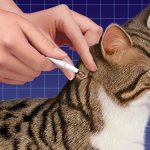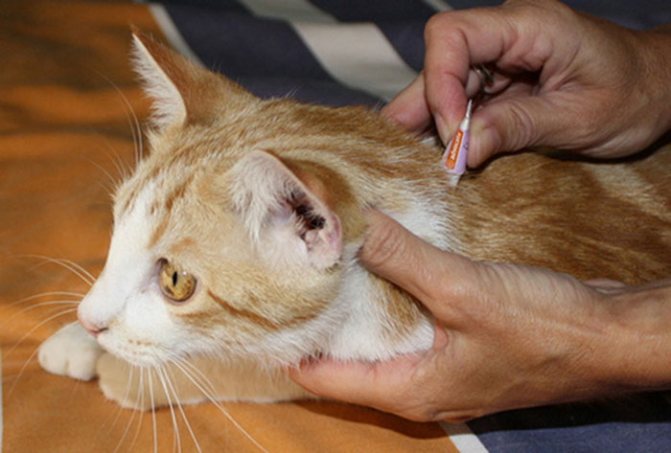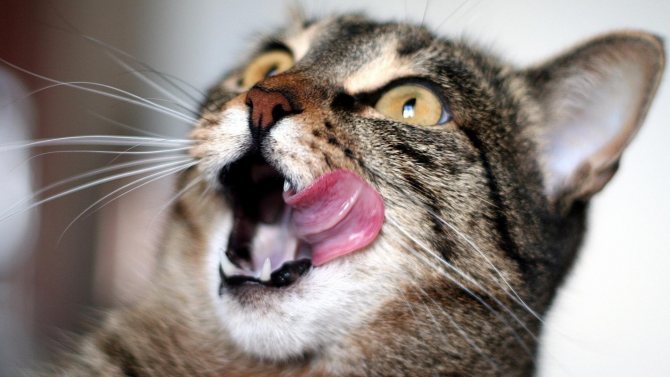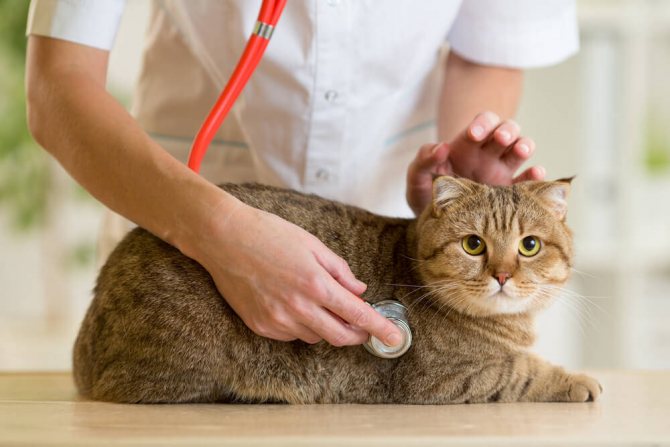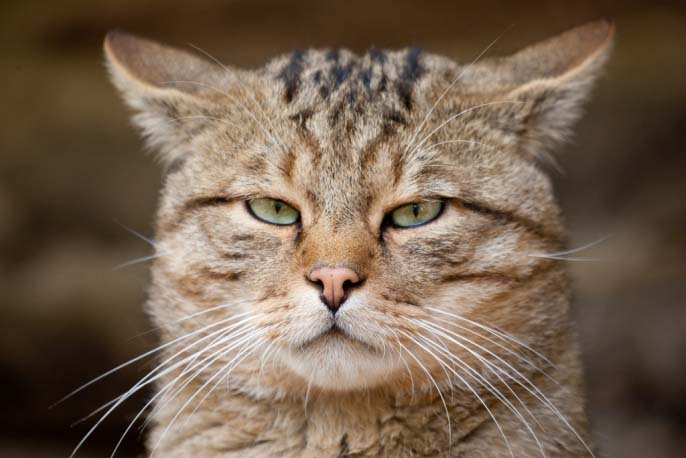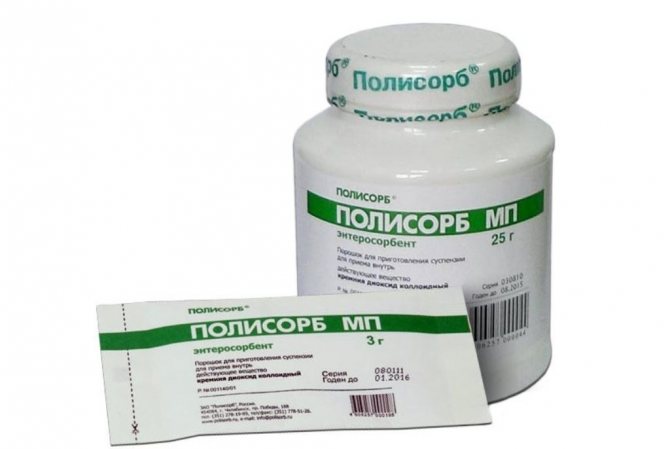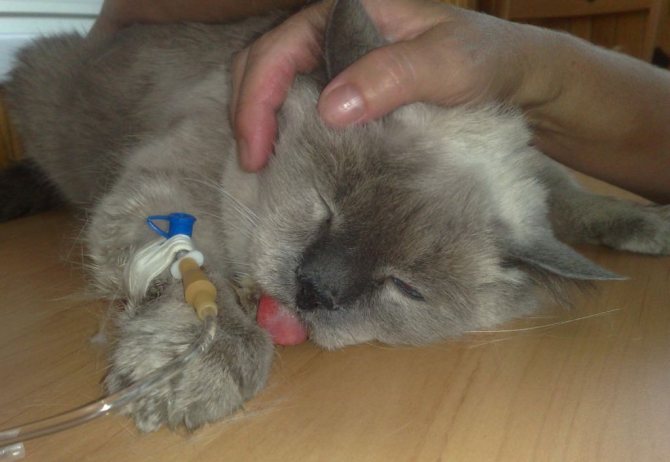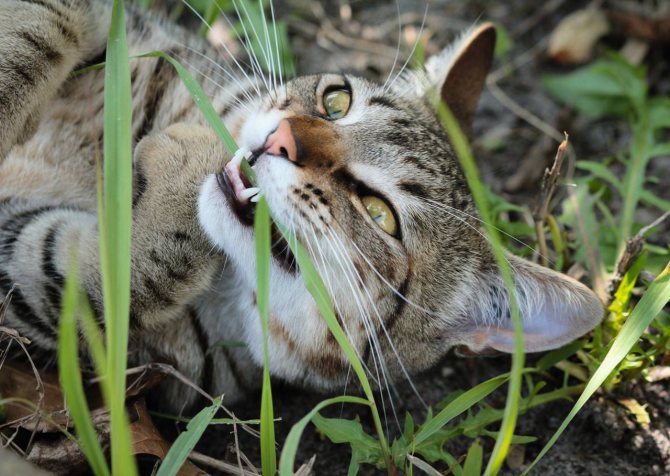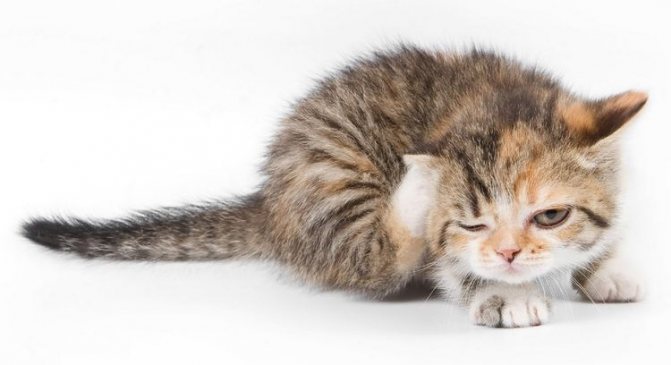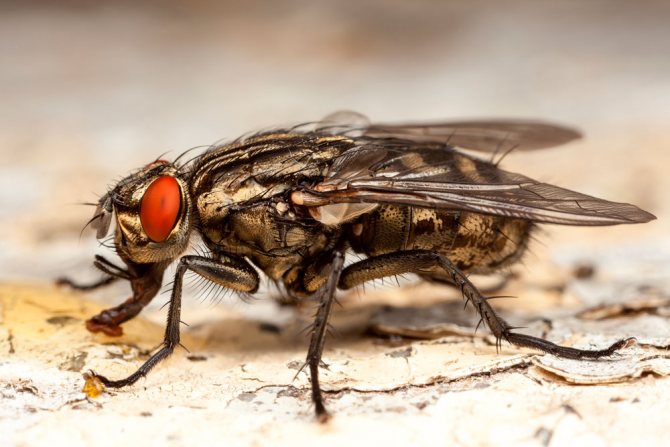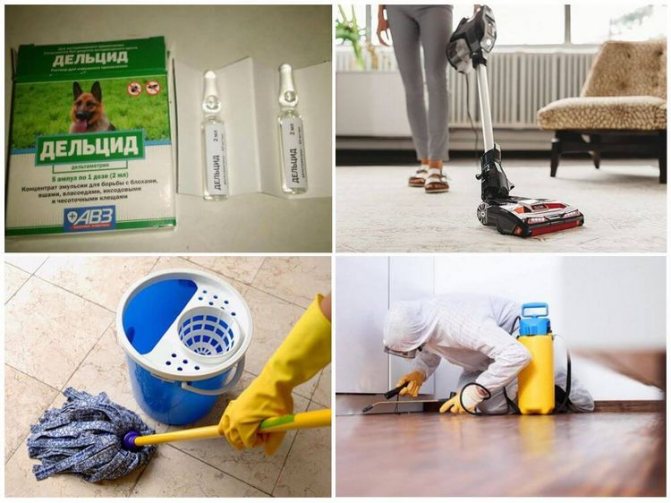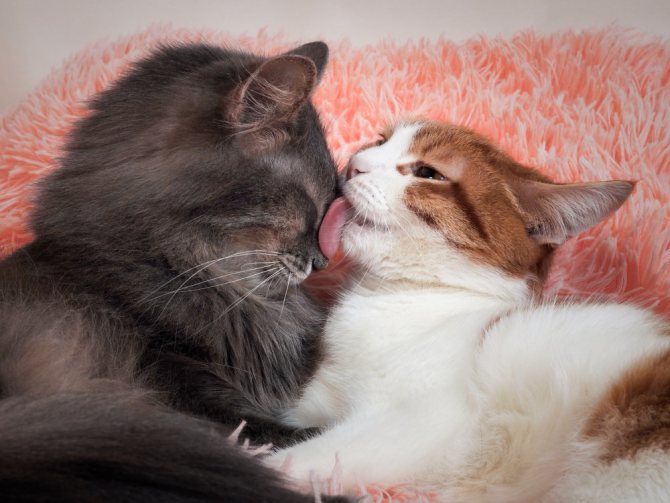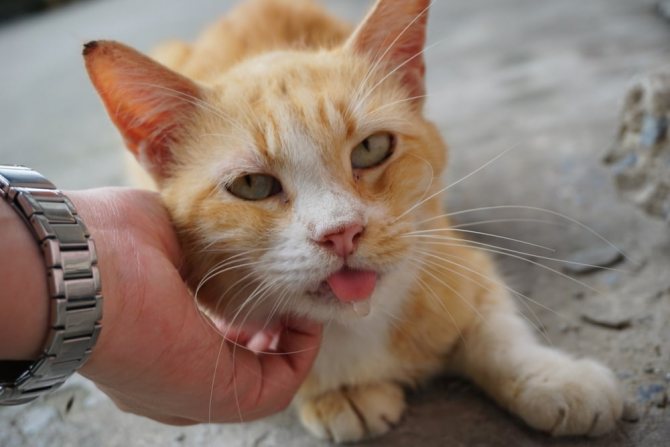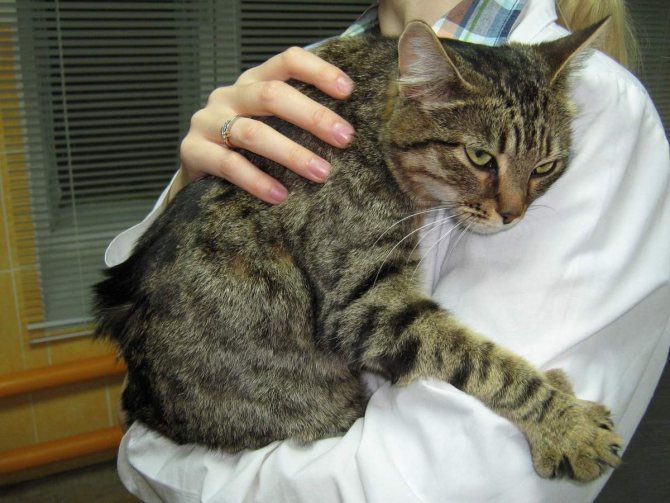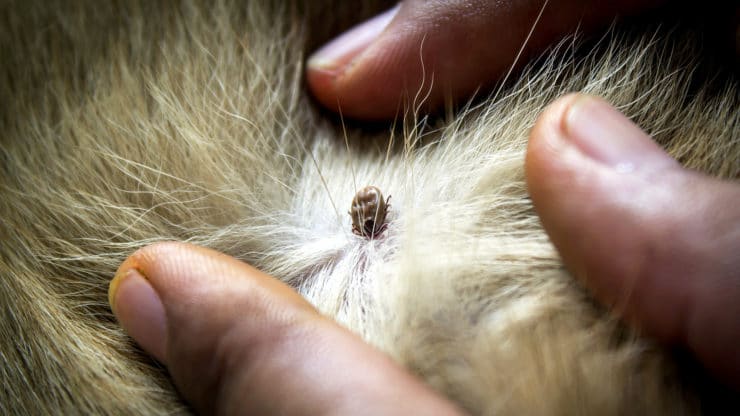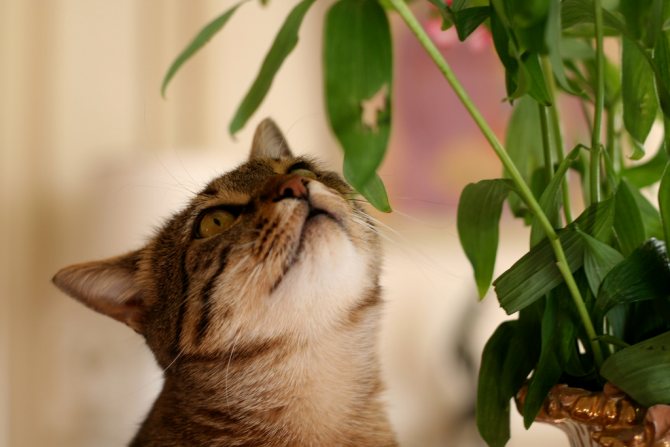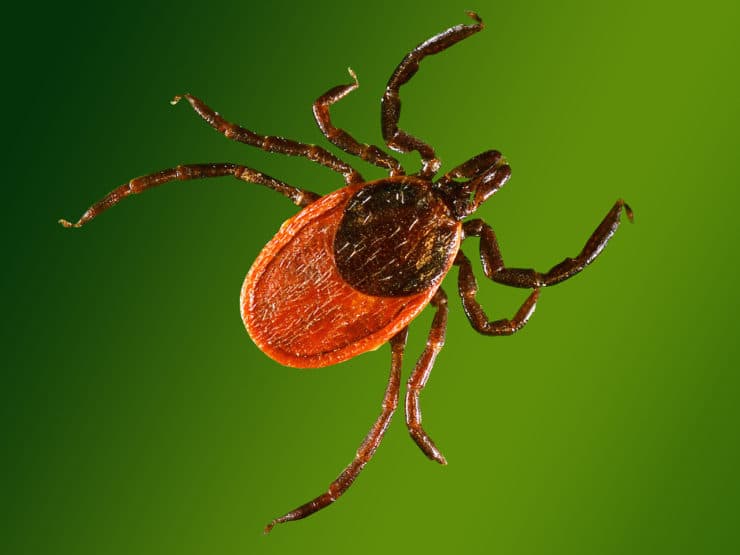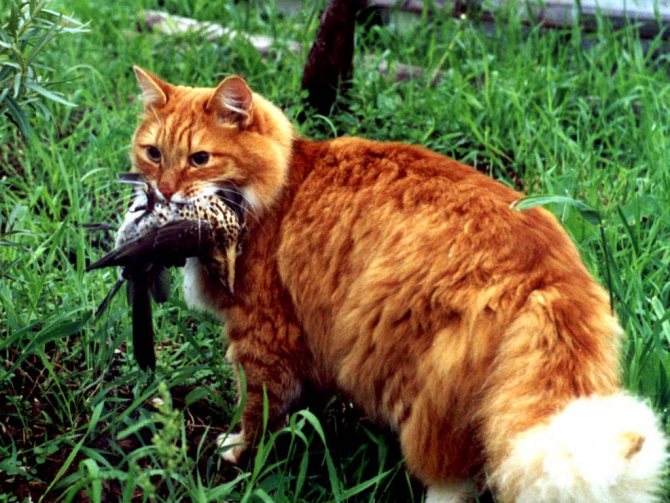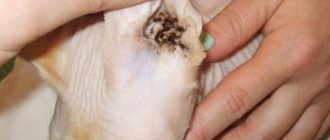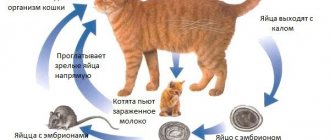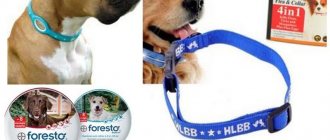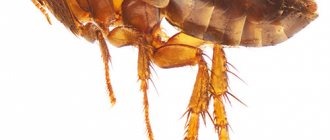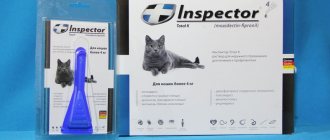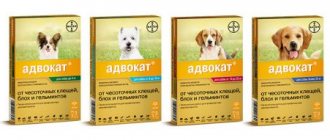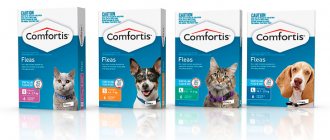An overdose of drugs for fleas and other parasites is a rare situation, but sometimes severe forms of animal intoxication are encountered. Panic in the owner of a cat or dog creates an additional danger of erroneous actions. The main task is to prevent complications in case of animal poisoning. Below we will consider how to timely determine intoxication in a pet, emergency measures if symptoms of a serious condition are detected.
The main symptoms of poisoning
Flea drops are highly toxic drugs. That is why they are so effective against harmful insects. Having licked a certain amount of flea drops, the cat can get off with slight discomfort or get serious poisoning. It all depends on the immunity of the animal, its age, the general condition of the body and how much money has got into the stomach. Intoxication is usually indicated by the following signs:
- The cat refuses food, does not even eat what she used to love very much.
- The animal constantly drinks water.
- There is increased salivation.
- The pet has severely dilated pupils.
- The cat is poorly oriented in space (for a long time it cannot decide to jump, lick food from the palm of the owner, the animal drifts, staggers). He does not fully retract his claws (this means that his paws are numb).
- Diarrhea appears.
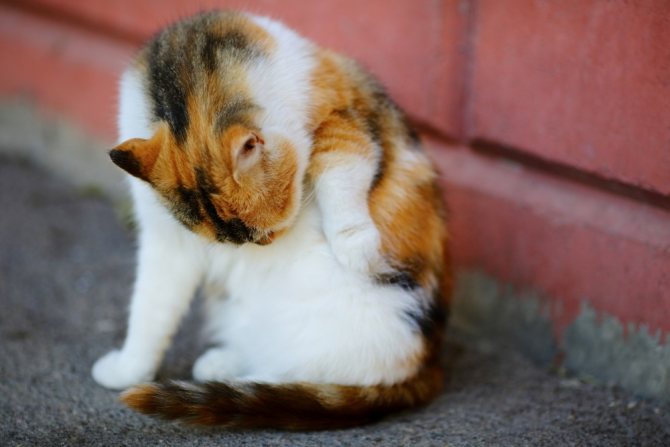
You should be able to distinguish between situations when a cat is poisoned with flea drops and when he is allergic to them. It can be manifested by tearing, itching of the skin, bald patches in the place where the product was applied. Licking drops is one thing, but having their individual intolerance is quite another.
Treatment components
Treatment is prescribed by the veterinarian after examining the pet. Show the doctor the drug with which you treated him. You also need to tell about the concomitant diseases of your animal, whether he is allergic to medications or food components. After examining the pet, the doctor will begin to provide first aid. It can consist of:
- intravenous or intramuscular steroids. Dexamethasone is the most commonly used drug. This drug quickly eliminates allergic manifestations and improves the condition of the pet;
- droppers with solutions to reduce intoxication and accelerate the elimination of toxins from the body with the help of the kidneys;
- the introduction of antihistamines (antiallergic) drugs, it can be diphenhydramine, suprastin, loratadine.
After providing first aid, the doctor will prescribe the course of treatment. You can give some drugs to your pet on your own. For injections and IVs, you will need to bring the animal to the veterinary clinic.
How to help your pet
Having noticed alarming symptoms, you need to try to alleviate the condition of the cat, poisoned by flea drops, as much as possible. Ideally, take the animal to the veterinarian and hand it over to a professional. However, this is not always possible, and it is a pity to look at a cat. What to do in this case?
You can give the animal rice water. Prepare it by pouring one and a half tablespoons of cereal with half a liter of water and boiling over low heat for forty minutes. The cooled and strained liquid is offered to the cat. Since he is constantly thirsty, most likely, he will not give up the medicine. Otherwise, the broth is poured into the cat with a syringe.
Of the drugs for poisoning with flea drops, Smecta is used. Half a sachet of this drug is diluted with two tablespoons of water and poured into the mouth or offered to the animal as a drink. The danger to the cat can be significantly reduced by allowing the animal to lick off the half of a regular activated charcoal tablet, crushed and dissolved in water.
It will draw out all toxins from the body. To alleviate the condition caused by drops, "No-Shpa" will help. The dose of this drug for an adult cat is also 0.5 tablets. But the intestinal microflora is perfectly restored by the prebiotic for animals "Vetelact". The features of its use are spelled out in the attached instructions.


A cat poisoned by flea drops should drink more. You can add a little potassium permanganate to the water if the incident has occurred recently. Fatty, salty, sweet during this period are contraindicated for the animal. Most likely, the cat himself will refuse such food, because his appetite is practically at zero.
Forecast and prevention
Without exception, all owners are interested in how dangerous poisoning with flea drops is. Veterinarians reassure: the cat will not die if she swallowed not a whole bottle of the product. Most likely, she was "lucky" to lick off quite a bit of the drug.
However, in this state, the animal cannot be ignored. Droplet poisoning is a serious stress for the body, which can provoke other dysfunctions. Old or sick individuals, as well as kittens, are the hardest to tolerate intoxication.
To avoid poisoning, you should drip the product exclusively on the withers. This is the place where the animal's tongue is most problematic to reach. However, sometimes the cat licks the drops from this place too - after all, the animal's body is very flexible and dexterous. Therefore, it is not enough just to apply the agent to the withers in the right amount. Additional measures need to be taken. For example, put on a special collar around the cat's neck, which will prevent the fluffy from licking.
It is not uncommon for several animals to live in the same house. By killing fleas to one pet, it is easy to jeopardize the health of another. Animals tend to lick each other. Keep tailed pets separately while dealing with fleas.
Well, and the last thing: you need to choose high-quality drops. And buy them in specialized pharmacies or stores. Poisoning with a low-grade flea of questionable origin can have unpredictable consequences.
General terms of use
Usually, flea and tick drops are applied to the skin of the animal at the withers. To do this, you need to carefully spread the coat and apply the dose of the drug indicated in the instructions. For the best effect, the product can be rubbed into the skin. After this procedure, the kitten should not be combed out and washed for 2-3 days.
Sometimes manufacturers recommend applying droplets not only to the withers, but also along the spine. This is done in the same way as in the first case. Each drug has its own dosage, so be sure to read the instructions before applying the product. It also describes in detail the number of flea drops.
Sometimes, instead of drops, your veterinarian may advise you to use a spray. In this case, the drug must be applied differently. For example, Fipronil spray must be sprayed over the entire skin of the animal.
Usually, flea and tick drops are applied to the skin of the animal at the withers
It is important to note that if the cat or kitten lives on the street, you need to make sure that the animals do not get wet after the procedure. If, after applying the drug, the animal falls into the rain, it makes sense to repeat the disinfection. Although most drops are not highly toxic, care must be taken not to get the product on the animal's nose, mouth and eyes. Otherwise, the mucous membrane must be rinsed with plenty of water.
And you also need to know that not all drops can be used for a kitten. Sometimes the manufacturer prescribes a different dosage for small pets. Otherwise, you need to buy special flea drops for kittens. Therefore, before buying such drugs, it is imperative to inform the seller of the age of the animal.
Cautious use


Treatment of a pet with drops against fleas
Manufacturers use insecticides of a certain dosage for the manufacture of their products. The minimum amount is sufficient to remove fleas from the cat, but the dose remains safe for the animals.
It is alarming that it is recommended to drip in places inaccessible for licking: the area of the withers between the shoulder blades, along the spine. However, these recommendations are more about the effectiveness of the product than the safety of cats.
All modern drops for cats work the same way. Within 2 hours, they are absorbed by the skin, localized in the hair follicles, sebaceous ducts. If the drops are licked off, do not have time to be absorbed, the protection against fleas cannot be called complete.
Allergy to toxins
If you apply the flea drops to the withers correctly, the cat should not lick them off. The situation is much more complicated if the kitten is also treated with a toxic agent. Then the cat can be poisoned by licking its cubs. If there is one kitten, then you should not worry too much, but if there are several kittens, you need to think over safety measures in advance.
Better to isolate the animals from each other for a couple of days. If the drug licks a small pet, then the poison can affect it several times stronger. In addition, it is important to note that small kittens can grab each other by the neck during play and so ingest toxins.
Allergic reactions to flea drops for cats are extremely rare. But if the pet shows obvious allergy symptoms after applying the drug, and they do not go away for 1-2 days, you need to urgently seek help from a veterinarian.
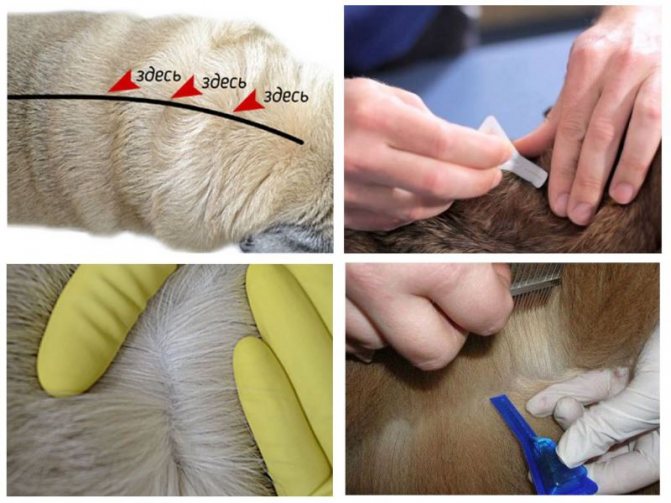

If you apply flea drops to the withers correctly, the cat should not lick them off.
Dangerous symptoms include:
- itching at the site of application of the drug;
- hair loss;
- dermatitis.
A person also needs to be extremely careful when applying the drug. It is better to use gloves and wash your hands thoroughly with soap and water after the procedure. It is also recommended not to pick up the animal for several days. The toxins can remain on the pet's skin, therefore, upon contact with it, the poison can cause allergies in the owner.
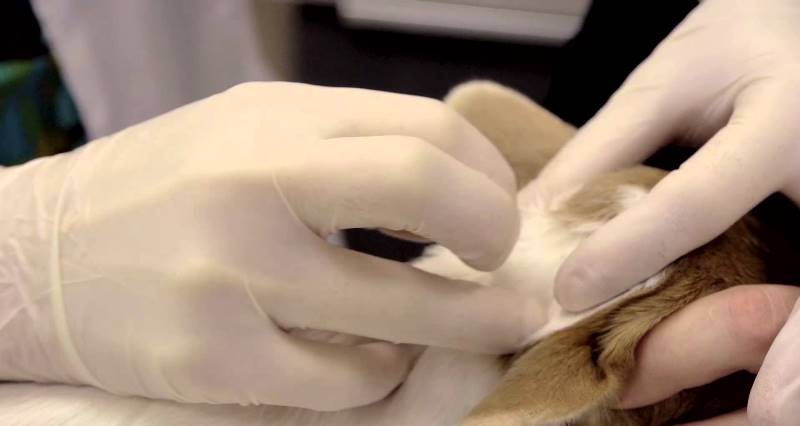

But drops for cats are low-toxic for the animals themselves; such drugs act on fleas much more aggressively. Some of the parasites die immediately after application of the drug. This often happens when an insect has fallen on the area of the skin where the drops were applied. Other parasites try to escape from their host as soon as they sense an intolerable smell.
> Drops from fleas for cats can be dangerous (video)
Ear mite: symptoms with a photo and treatment with pharmacy medicines and folk remedies
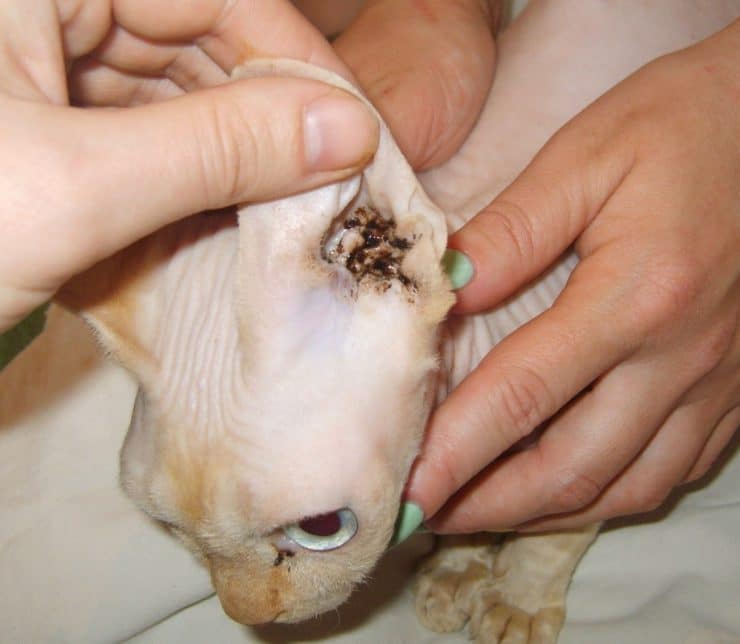

Otodectosis caused by ear mites is characterized by the following symptoms:
- restless patient behavior;
- constant attempts to scratch an itchy ear;
- black, moist and dry discharge inside the auricle;
- tilted head position (the animal lowers its head from the side of the affected ear to the floor).
In the absence of timely treatment, the disease from the outer ear passes into the middle and inner, can lead to perforation of the tympanic membrane and the penetration of infection into the meninges. At the initial stage, otodectosis is treated at home. Treatment of the disease consists in cleansing the auricle (including folk remedies - infusion of green tea, sterilized vegetable oil), instilling acaricidal drops (Anandin, Otovedin, Bars, etc.) and using ointments (Amidel-gel, Oridermil).In advanced cases and with complications, injections will be required.
Effective drugs
There are a number of drugs, the results of clinical trials of which indicate their effectiveness and relative safety. The most popular flea remedies include:
- Beaphar.
- Leopard.
- The barrier is super.
- Hartz.
- Fipronil.
Beafar is a disinfectant that can be applied to both cats and small kittens. In addition, this remedy is also indicated for pets who are weakened after an illness. Biafar is considered the safest drops, since their components are absolutely harmless to animals. Therefore, do not worry if the cat licks the kitten after the application procedure. The effect of this drug can last for 2 weeks.


The classic drug of the Bars brand - drops and the new drug Bars forte contain a poisonous substance of the phenylpyrazole group - fipronil
Domestic drops Bars begin to act immediately after applying them to the pet's skin. However, they cannot be used to disinfect pregnant or lactating cats. It is also not recommended to use the drug for cats under 10 weeks of age. For such animals, the manufacturer produces a softer product.
Super Barrier can be dripped on kittens that are 12 weeks old. The effect of the drug lasts for 2 months, so it guarantees high efficiency. Thanks to long-term exposure, the toxins destroy cat fleas at all stages of development. A convenient dispenser allows you to accurately apply the preparation to the withers. There is no need to drip drops along the spine.
Drops from fleas and ticks Harz are not cheap, but one package contains 3 pipettes, each of which has an effect for 1 month. It is important to note that this drug is not afraid of moisture. The toxins remain on the animal's skin even if the pet is exposed to rain. The manufacturer produces the drug with different dosages, which depend on the age of the cat. However, this remedy should not be used on sick or debilitated cats or kittens under 12 weeks of age. This flea preparation does not need to be rinsed off.


Fipronil is a flea spray. It should only be applied to the skin outdoors or in a well-ventilated area. The drug should be sprayed at a distance of 10 cm from the skin, gently lifting the coat. Fipronil should moisten the skin, for the best effect, you can rub it a little. Processing must be carried out only with gloves. The manufacturer also recommends moistening a napkin with the drug and treating the ears, folds of skin and paws of the animal with it. During the first 10 minutes after disinfection, contact with the animal is prohibited. It is also not recommended to bathe it for the next 3 days.
To choose the most optimal remedy, it is advisable to consult a veterinarian. If for some reason this is not possible, during the purchase of the drug, it is imperative to inform the seller of the age and weight of the animal, the degree of parasite infestation. This will help you get rid of fleas quickly and effectively.
Useful materials:
- How to drip chloramphenicol drops What is the prescription for chloramphenicol eye drops?
- Cutaneous horn General description of the disease Cutaneous horn on the forehead or face (ICD code 10 - L57.0) - ...
- Itching and odorless discharge Main causesBefore considering the factors provoking the appearance of discharge that has a sourish odor, it is necessary to immediately note ...
- Normal temperature in animals Normal temperature in different species of animals Veterinary services Day hospital for animals Veterinary certificates Vaccination ...
Why fleas are dangerous for cats
Before you start choosing an effective remedy for fleas in cats, you must be sure that fleas are parasitizing in its fur.Otherwise, you risk harming your pet by using a means for removing other insects.
The photo shows how flea drops look.
- You have noticed that your pet looks very restless, he no longer sleeps as often as he did before. If fleas are bred in his fur, then he can often look at his body, observing the parasites.
- The animal often scratches or licks the same places on its body.
- If there are wounds on the animal's body that can be seen with the naked eye, then we can say with confidence that fleas have bred in the pet's fur.
To make sure that your cat has insects, thoroughly comb her coat. After brushing, you can see the flea feces that remain in the pet's coat.
Before proceeding with the purchase of the chosen product, pay attention to the fact that fleas can live not only in the fur of the animal, but also on its bedding or on your pet's toys. And also remember that the medicine should destroy the insect larvae, because this is the only way you can get rid of the new generation.
- Shampoos. Shampoos are quite effective for cats, especially when used correctly. Don't buy a product that will appeal to you with its looks. It is best to contact your veterinarian for advice on which remedy will be most effective for your pet.
- Powders. This tool is not very effective due to the inconvenient method of use. It is very difficult to spread the powder over the body of the animal, especially if it is very fluffy. Therefore, when choosing the best flea remedy for cats, bypass such a product, despite the fact that its price is quite low.
- Collars have proven themselves well as a preventative against insects. It should be used if your cat is often outdoors. The action of one collar will last for about 3 months, after which it must be replaced. There are collars that are made specifically for small pets. Therefore, if you are thinking about how to choose a flea remedy for kittens 1 month old, you can try to pay attention to the collar. But this product has several drawbacks that should not be forgotten. In hot weather, it may be uncomfortable for cats to wear an anti-flea collar, because fur can begin to fall out in the place where it is worn. And also the surface of the collar has a rather unpleasant odor, but if this does not bother you, you can safely buy it.
- Of course, the most effective flea remedies for cats are drops. They have long established themselves among a huge number of owners. Consult your veterinarian to find the right product. He will prescribe drops that are most effective and not harmful to your pet. The drops have gained great popularity also due to the fact that it is an excellent flea remedy for kittens at 2 months. To comply with all safety rules, the drug must be used to treat the area of the spine and the area around the shoulder blades.
The photo shows drops that can be used to remove fleas.
The picture shows a flea and tick collar.
- Do not allow the animal to come into contact with water for 3 days after using the drug, as well as before the procedure. Some flea drops are washed off immediately with water.
- Apply the product strictly according to the instructions, or as the veterinarian said, do not self-medicate.
- Read the instructions carefully and in no case exceed the dosage of drops or any other product you intend to use.
We suggest that you familiarize yourself with: Blastocysts in feces in an adult norm
If you notice that drops have got on the tongue of the animal, then you should not immediately panic. If your cat has very good immunity, then poisoning can bypass her.But, if you notice that your pet has diarrhea, it has become lethargic and indifferent, then you should start taking action.
We suggest that you familiarize yourself with: What diseases can be found in quails
In order to cure an animal from poisoning, you can use rice water or smecta, which must be diluted strictly according to the instructions. If your self-treatment has not helped, then contact your veterinarian. He will be able to prescribe medications that will relieve your pet of agony.
To prevent further poisoning in the future, apply flea drops only before bedtime.
Fleas - blood-sucking cutaneous parasites, are very widespread, and if a cat even sometimes visits the street, then, without special means of protection, infection cannot be avoided.
Parasitizing on the host's body and feeding on its blood, fleas pose a danger to the health of the animal, for the following reasons:
- Fleas are intermediate hosts of some types of helminths. When an infected flea is swallowed, when the cat catches them with its teeth or licks its lips, the parasite larva is released from the insect in the digestive tract of the animal. It fixes itself on the mucous membrane, grows, feeds and soon turns into an adult.
- Fleas carry infectious diseases, when bitten with microparticles of blood, from a sick animal to a healthy one.
- Breeding in large numbers can cause dermatitis, allergies and anemia.
- Although fleas do not parasitize on humans, single bites can inflict, and this is not very pleasant, since flea bites are accompanied by severe itching.

